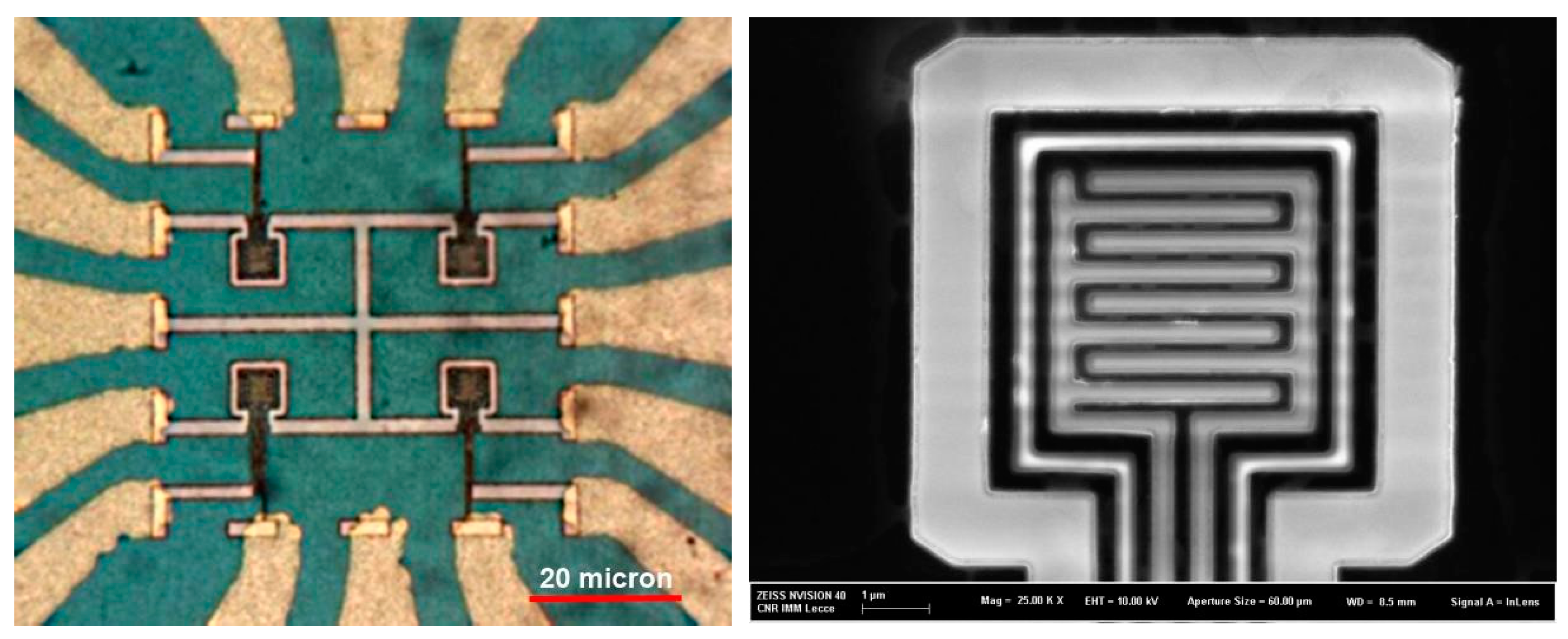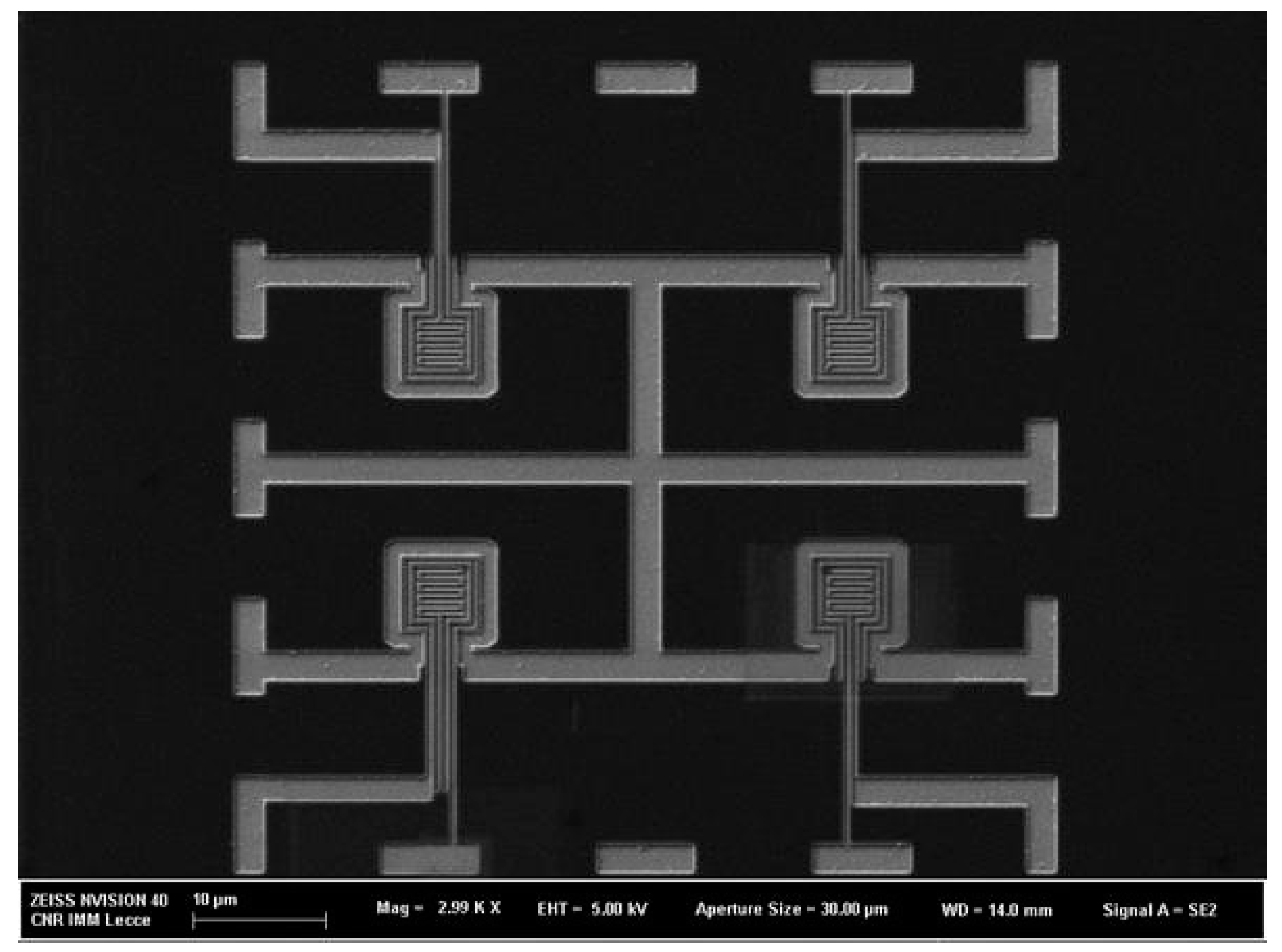100 nm-Gap Fingers Dielectrophoresis Functionalized MOX Gas Sensor Array for Low Temperature VOCs Detection †
Abstract
:1. Introduction
2. Materials and Methods
3. Results and Discussion
Conflicts of Interest
References
- Zhao, Q.; Ju, D.; Song, X.; Deng, X.; Ding, M.; Xu, X.; Zeng, H. Polyhedral Zn2SnO4: Synthesis, enhanced gas sensing and photocatalytic performance. Sens. Actuators B 2016, 229, 627–634. [Google Scholar] [CrossRef]
- Zheng, Z.Q.; Yao, J.D.; Wang, B.; Yang, G.W. Light-controlling, flexible and transparent ethanol gas sensor based on ZnO nanoparticles for wearable devices. Sci. Rep. 2015, 5, 11070. [Google Scholar] [CrossRef] [PubMed]
- Menumerov, E.; Marks, B.A.; Dikin, D.A.; Lee, F.X.; Winslow, R.D.; Guru, S.; Sil, D.; Borguet, E.; Hutapea, P.; Hughes, R.A.; et al. Sensing Hydrogen Gas from Atmospheric Pressure to a Hundred Parts per Million with Nanogaps Fabricated Using a Single-Step Bending Deformation. ACS Sens. 2016, 1, 73–80. [Google Scholar] [CrossRef]
- Francioso, L.; De Pascali, C.; Bartali, R.; Morganti, E.; Lorenzelli, L.; Siciliano, P.; Laidani, N. PDMS/Kapton Interface Plasma Treatment Effects on the Polymeric Package for a Wearable Thermoelectric Generator. ACS Appl. Mater. Interfaces 2013, 5, 6586–6590. [Google Scholar] [CrossRef] [PubMed]
- Adami, A.; Lorenzelli, L.; Guarnieri, V.; Francioso, L.; Forleo, A.; Agnusdei, G.; Taurino, A.M.; Zen, M.; Siciliano, P.A. Sens. Actuators B Chem. 2006, 117, 115–122. [CrossRef]
- Epifani, M.; Francioso, L.; Siciliano, P.; Helwig, A.; Mueller, G.; Díaz, R.; Arbiol, J.; Morante, J.R. Sens. Actuators B 2007, 124, 217–226. [CrossRef]
- Presicce, D.S.; Francioso, L.; Epifani, M.; Siciliano, P.; Ficarella, A. Sens. Actuators B 2005, 111–112, 52–57. [CrossRef]



Publisher’s Note: MDPI stays neutral with regard to jurisdictional claims in published maps and institutional affiliations. |
© 2018 by the authors. Licensee MDPI, Basel, Switzerland. This article is an open access article distributed under the terms and conditions of the Creative Commons Attribution (CC BY) license (https://creativecommons.org/licenses/by/4.0/).
Share and Cite
Francioso, L.; Creti, P.; Martucci, M.C.; Capone, S.; Taurino, A.; Siciliano, P.; Pascali, C.D. 100 nm-Gap Fingers Dielectrophoresis Functionalized MOX Gas Sensor Array for Low Temperature VOCs Detection. Proceedings 2018, 2, 1027. https://doi.org/10.3390/proceedings2131027
Francioso L, Creti P, Martucci MC, Capone S, Taurino A, Siciliano P, Pascali CD. 100 nm-Gap Fingers Dielectrophoresis Functionalized MOX Gas Sensor Array for Low Temperature VOCs Detection. Proceedings. 2018; 2(13):1027. https://doi.org/10.3390/proceedings2131027
Chicago/Turabian StyleFrancioso, Luca, Pasquale Creti, Maria Concetta Martucci, Simonetta Capone, Antonietta Taurino, Pietro Siciliano, and Chiara De Pascali. 2018. "100 nm-Gap Fingers Dielectrophoresis Functionalized MOX Gas Sensor Array for Low Temperature VOCs Detection" Proceedings 2, no. 13: 1027. https://doi.org/10.3390/proceedings2131027
APA StyleFrancioso, L., Creti, P., Martucci, M. C., Capone, S., Taurino, A., Siciliano, P., & Pascali, C. D. (2018). 100 nm-Gap Fingers Dielectrophoresis Functionalized MOX Gas Sensor Array for Low Temperature VOCs Detection. Proceedings, 2(13), 1027. https://doi.org/10.3390/proceedings2131027







